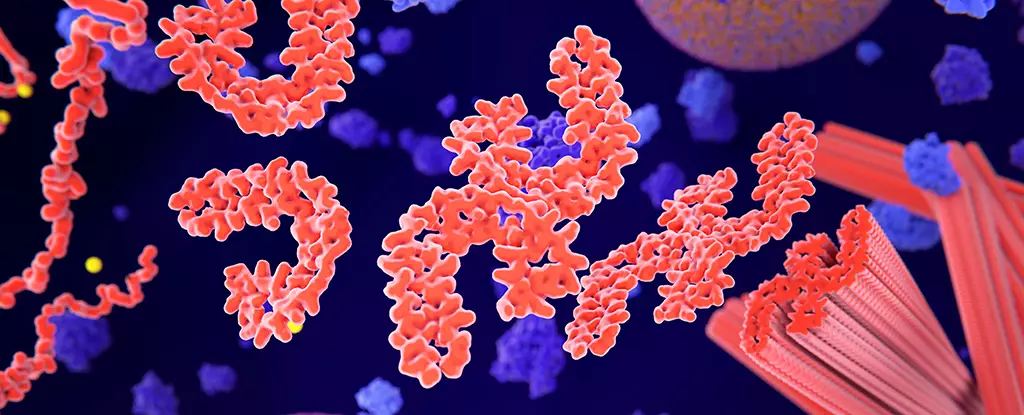Alzheimer’s disease is a formidable challenge in modern medicine, affecting millions globally and creating profound emotional and financial burdens for families and healthcare systems alike. Characterized by cognitive decline and memory loss, one of the disease’s hallmarks is the formation of abnormal protein structures in the brain—specifically beta-amyloid plaques and tau protein tangles. These clumps severely disrupt neuronal function, indicative of a deeper problem that arises from protein misfolding and aggregation. While previous therapies have made some strides, the quest for an effective treatment that not only mitigates symptoms but targets the root of the problem continues.
Recent research breakthroughs, however, are shining a light on potential solutions. One such breakthrough is RI-AG03, a peptide inhibitor that showcases promise in addressing tau protein tangles. Originating from an international research collaboration, RI-AG03 has been particularly noted for its ability to bind and inhibit two critical regions of tau proteins, effectively preventing the aggregation that leads to toxic fibril formation. The research, spearheaded by scientists including neuroscientist Amritpal Mudher, utilizes innovative computational biological methods to ensure precision in targeting the problematic areas of tau.
What sets RI-AG03 apart is its dual-target mechanism. Current therapies, often one-dimensional, do not address the multifaceted nature of tau aggregation, which limits their effectiveness. The research team’s achievement in producing a drug that can inhibit these key regions may pave the way for enhanced neuroprotective strategies that could halt or at least decelerate neurodegenerative processes.
In preclinical trials involving fruit flies and human cellular models, RI-AG03 demonstrated remarkable efficacy, leading to an impressive 35% increase in lifespan among the fruit fly subjects. These findings highlight not only the potential of RI-AG03 to extend life but also its capacity to attenuate neuron degeneration and prevent the formation of harmful tau fibrils. This encouraging outcome is critical because it suggests that the drug may target the mechanisms of Alzheimer’s more effectively than existing options.
Despite its potential, developing a drug for human use necessitates rigorous testing. Researchers are in the process of moving to mouse models before entering human clinical trials, a crucial step in determining dosage, effectiveness, and safety. A primary objective in this development phase is to minimize side effects, particularly because current aggregation inhibitors often impact other proteins, leading to unintended consequences.
Precision in drug design cannot be overstated, particularly when addressing the complexities of the human brain. The fragile balance between promoting neuronal health and causing harmful side effects is often a driving factor behind the failure of many candidate drugs in clinical settings. RI-AG03 has been purposefully crafted to target tau with a finesse that current treatments lack, as highlighted by scientist Anthony Aggidis. This specificity offers the possibility of less collateral damage, a common pitfall in drug development for neurodegenerative diseases.
Additionally, one of the outstanding features of this research is the multi-faceted approach in addressing Alzheimer’s disease. By targeting tau protein aggregation rather than solely focusing on the symptoms, scientists are setting the stage for potentially transformative therapies. This new understanding of the role of tau in neurodegeneration underscores the growing realization that tackling these protein mishaps may be key to altering the course of the disease.
As the medical community continues to grapple with the realities of Alzheimer’s disease, innovations like RI-AG03 represent a beacon of hope. Though further testing is required, the initial findings serve as an important step in translating basic research into clinical applications. By targeting the very mechanisms driving Alzheimer’s-related degeneration, RI-AG03 could lead to therapies that not merely manage symptoms, but rather curtail the disease’s progression, providing new avenues for healing and hope for millions suffering from this debilitating condition. The journey may be long, but advances like these signal a promising shift towards more effective Alzheimer’s treatments.


Leave a Reply